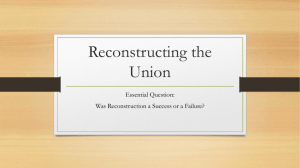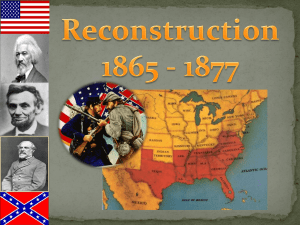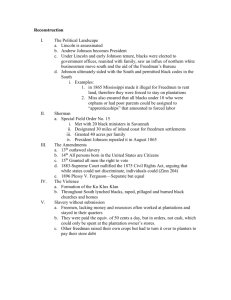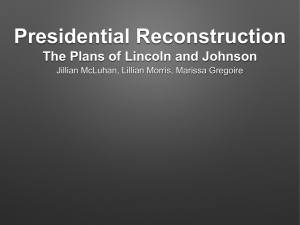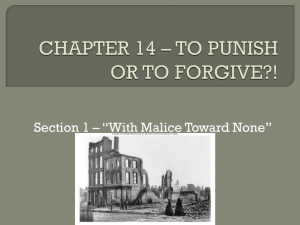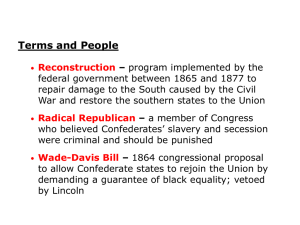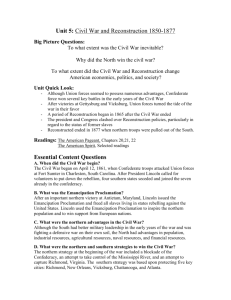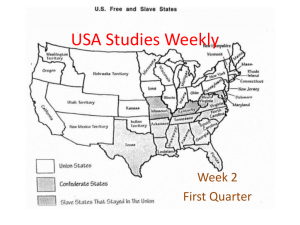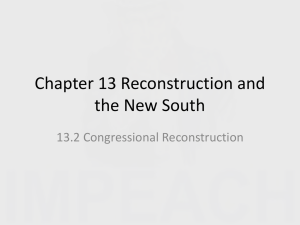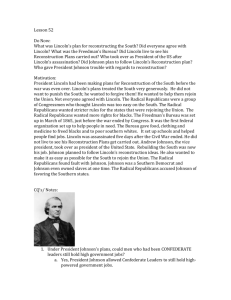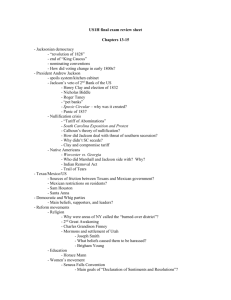Chapter 17 Section 1 Reconstruction Plans
advertisement
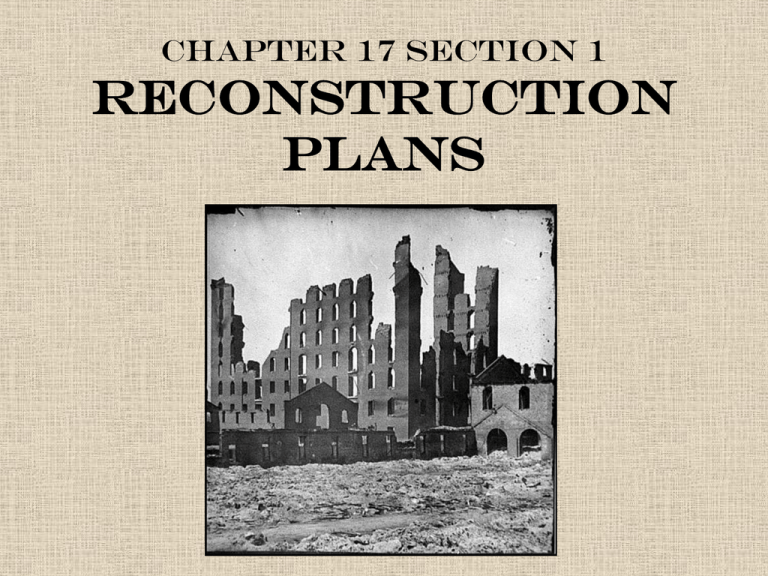
Chapter 17 Section 1 Reconstruction Plans Post Civil War America • Because Southern states had seceded from the Union, the federal government needed to establish a system by which they could be readmitted. Post Civil War America • The economy and society of the South was devastated and needed to be rebuilt. Reconstruction • Period of rebuilding from 1865-1896 • Refers to the various plans for readmitting Southern states to the Union. Lincoln’s Plan • Before his assassination, President Lincoln had been planning for readmittance of states during the last few years of the Civil War. Lincoln’s Plan • Lincoln felt that punishing the South served no useful purpose and he wanted to offer amnesty-a pardon-to all white Southerners who took an oath of loyalty. Ten Percent Plan Plan involved: • When 10% of voters of a state took an oath of loyalty to the Union, the state could form a new government • Adopt a state constitution that banned slavery Radical Plans • Many Republicans in Congress considered Lincoln’s plan far too forgiving of the South. Radical Republicans • Republicans in the House and Senate that favored a radical, or extreme, approach to reconstruction. • Congress was controlled by the radicals and they voted to deny any congressional seats to representatives from states readmitted under Lincoln’s plan. Thaddeus Stevens • Leader of the Radical Republicans in the House. He was adamant about punishing the South. Wade Davis Bill Reconstruction plan passed by the Radical Republicans in July 1864: • over 50% of the white males of a state had to swear an oath of loyalty • only white males that swore they fought in the Confederate army could play a role in writing new state constitutions • states had to ban slavery • no former Confederate could hold any public office Wade Davis Bill • Lincoln refused to the sign the bill and vetoed it. Freedman’s Bureau • In March 1865, Lincoln and Congress worked together to set up this government agency. • The bureau helped freed slaves to adjust to freedom. Freedman’s Bureau • It provided food, clothing, medical services, and helped freed slaves acquire land or find work. Andrew Johnson becomes President • Upon Lincoln’s death on April 15, 1865, Vice-President Andrew Johnson assumed the powers of President. Andrew Johnson becomes President • Johnson was a Democrat from Tennessee that supported the Union during the war. Restoration Johnson’s plan for reconstruction included: • granted amnesty to most Southerners that swore loyalty • High-ranking Confederates could only be pardoned by appealing to the President • only pardoned loyal whites could be play a role in writing new state constitutions • states had to denounce secession and ban slavery • states had to ratify the 13th Amendmentpassed in January of 1865 the amendment abolished slavery in the United States
